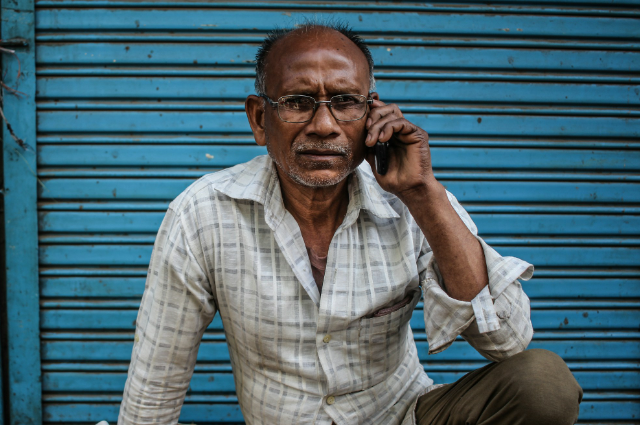
Photo by Yogendra Singh on Unsplash
In a significant move to tackle the issue of fraudulent mobile connections, the Ministry of Communications has announced the disconnection of over one crore such connections this action came due to the initiative known as Sanchar Saathi. This action is part of a broader strategy to enhance the security and quality of telecom services in India.
Addressing Spam Calls
To effectively combat the growing problem of spam calls, the Telecom Regulatory Authority of India (TRAI) has mandated that telecom operators take decisive action against entities that misuse bulk connections for sending spam. This includes robocalls and pre-recorded messages. In just the past two weeks more than 350,000 of these problematic numbers have been disconnected and 50 entities have been blacklisted. Additionally, the ministry has reported the blocking of approximately 350,000 unused or unverified SMS headers and 1.2 million content templates, further reducing spam communications.
Sanchar Saathi: A Citizen-Centric Platform
To empower citizens in the fight against cyber fraud, the Department of Telecommunications (DoT) has launched a user-friendly platform called Sanchar Saathi. This platform allows individuals to report suspicious calls and messages easily. As a result of these efforts, over one crore fraudulent mobile connections have been disconnected. Moreover, 227,000 mobile handsets involved in cybercrime and financial fraud have been blocked that is showcasing the platform's effectiveness in protecting consumers.
Improving Network Performance
With these anti-fraud measures, the government is also focused on enhancing network performance. TRAI is tightening benchmarks for critical network parameters such as network availability, call drop rates and packet drop rates. New regulations titled "The Standards of Quality of Service of Access (Wirelines and Wireless) and Broadband (Wireline and Wireless) Service Regulations, 2024" will take effect on October 1, 2024. Starting April 1, 2025, the monitoring of mobile service quality will shift from a quarterly to a monthly basis by ensuring more consistent oversight.
Proactive Measures Against Telemarketers
In addition to these regulations, TRAI has proposed measures for the immediate suspension of services for unregistered telemarketers upon receiving a certain number of complaints. This proactive approach aims to detect and act against suspected spammers before they can cause significant disruption.
Ongoing Commitment to Telecom Security
The DoT and TRAI are committed to enhancing the overall quality and security of telecom services in India. Through strategic policies, infrastructure development, and effective complaint redressal mechanisms they are working diligently to create a safer and more reliable telecommunications environment for all citizens. These concerted efforts reflect a strong commitment to not only combat fraud but also to ensure that users can enjoy high-quality telecom services without the fear of spam or cyber threats.
Combating Cyber Threats: A Proactive Approach by the Department of Telecommunications
In May of this year, the Department of Telecommunications (DoT) took significant action against cyber threats by blacklisting 52 entities engaged in the distribution of harmful and phishing SMS messages. This decisive move aims to protect citizens from the rising surge of cybercrime that exploits mobile technology.
Blocking Malicious Entities and Devices
The DoT's efforts did not stop at merely identifying these malicious entities. They also took the critical step of blocking 348 mobile handsets across the nation that were linked to these activities. This action is part of a broader initiative to ensure the safety and security of mobile communications in the country.
In addition to these measures, official reports from the Press Trust of India (PTI) indicate that the DoT has flagged an impressive 10,834 mobile numbers for further verification. This re-verification process is essential to identify and eliminate potential threats by ensuring that only legitimate users can access mobile networks.
Addressing Device Identification and Fraud
The issue of cybercrime extends beyond just SMS threats; it also encompasses the misuse of mobile devices. To combat this, the DoT has blocked 158,000 unique mobile device identification numbers known as IMEI numbers that were found to be involved in various cyber crimes and financial frauds. By targeting these devices, the department aims to disrupt the operations of cybercriminals and safeguard the integrity of mobile communications.
Moreover, the DoT has implemented strict measures against mobile connections established using fake or forged documents. This crackdown is crucial in preventing criminals from exploiting the system and using fraudulent identities to carry out their illegal activities.
The proactive measures taken by the Department of Telecommunications reflect a strong commitment to enhancing cybersecurity and protecting citizens from the dangers posed by cybercriminals. By blacklisting malicious entities, blocking compromised devices and ensuring the legitimacy of mobile connections, the DoT is working diligently to create a safer digital environment for all.
Uncovering the Three Major Categories of Fraud
Telecom fraud is a pervasive issue that affects individuals, businesses, and service providers of similar nature. With the rise of technology, fraudsters have become increasingly sophisticated in their methods making it essential to understand the different types of telecom fraud. We will delve into the three major categories of telecom fraud, highlighting their characteristics, methods and consequences.
Category 1: Traffic Pumping Schemes
Traffic pumping schemes also known as access stimulation that involve fraudsters boosting traffic to high-cost destinations by sharing revenue with the destination. This type of fraud is characterized by:
- Spikes in traffic to high-cost destinations.
- Fraudsters exploiting security practices of service providers' customers.
- Attacks often occur during holidays and weekends when networks are less monitored.
Category 2: Schemes to Defraud Telecom Service Providers
These schemes are the most complex by exploiting telecom service providers through:
- SIP trunking
- Regulatory loopholes
- Other sophisticated methods
Category 3: Schemes Conducted Over the Telephone (Phone Fraud)
Phone fraud encompasses general fraud perpetrated over the telephone, including:
- Premium rate number scams
- Call forwarding fraud
- VoIP telecom fraud
. . .
References:
